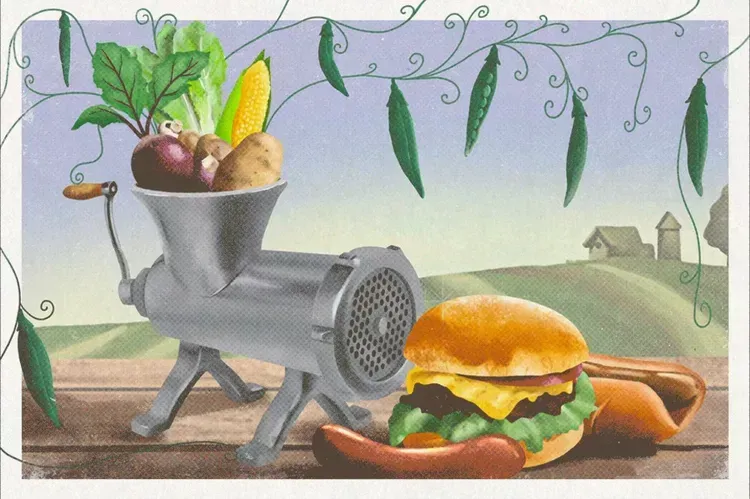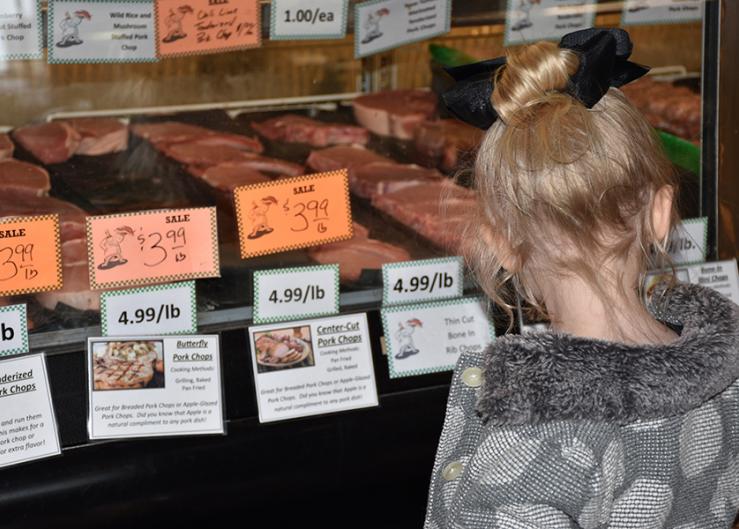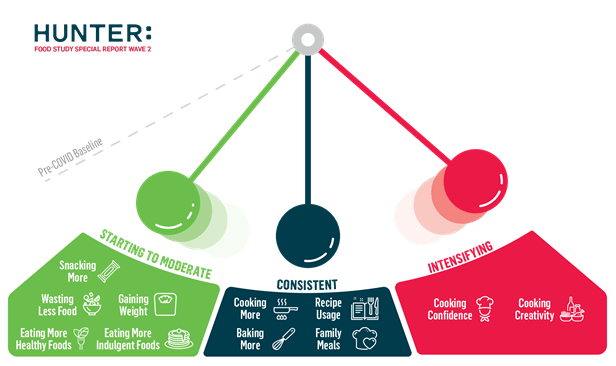The Pandemic Upped My Cooking Game
By JENNIFER SHIKE January 26, 2021
Although there are many reasons why I can’t wait for this pandemic to end, one thing I will miss is the increased time our family has spent sitting around the table together. I always knew we had a crew of talkers, but 2020 reinforced this at our home. It also brought me closer to my roots – spending more time in the kitchen preparing family favorites and discovering some new ones, too.
I have to admit – I certainly upped my cooking game last year, and research shows I’m not alone. In fact, data in the HUNTER Food Study Special Report Wave Two: America Keeps on Cooking shows 51% of Americans are cooking more and 41% are baking more than they did at the same time last year.
This study assessed how attitudes and behaviors regarding purchasing, preparing and consuming food have evolved nine months into the pandemic (December 2020) as compared to at the onset of the COVID-19 crisis (April 2020). HUNTER says this gives us a lens into which of these habits are likely to continue into the new year and beyond.
"The study results gave us some interesting data to consider as we enter into a new year and endeavor to predict how it will unfold," said Heddy DeMaria, chief insights officer at HUNTER. "As restrictions from the pandemic remain in place, it's inspiring to see how resilient Americans have become. They continue to channel their energies into the kitchen, adopting habits that bring joy, spark creativity and strengthen family bonds. As we eagerly look forward to a post-COVID era, the data suggests these new habits will stick around and become part of our new normal."
The study’s top findings include:
1. Americans are more confident and creative in the kitchen.
Respondents said the main reason they are cooking at home more is to save money (67%), eat healthier (56%) and feel good (56%). Those cooking more at home also report increased confidence in their abilities (50%) while another quarter of consumers say they are learning more and building greater confidence, the report said. An increasing number report branching out to try new ingredients (47%), brands and products (52%) and many continue to rediscover old favorites (24% ingredients, 16% brands and products).
2. Americans still find joy in preparing meals.
Despite anecdotal evidence of pandemic cooking fatigue and baking burnout, HUNTER reports these activities remain a source of joy for consumers. More than three quarters of survey respondents that are cooking more say that they find enjoyment in cooking (81%), an eight-point increase over the Wave One / April 2020 findings. As many cooks can attest and the data shows, home cooking also helps brings families together. 45% of consumers report eating together more as a family and the number climbs to 55% among households with kids.
3. Food waste and healthy food consumption are trending back to pre-pandemic levels.
Although the pandemic has impacted many consumer habits, data shows that while many Americans are wasting less food (42%) than pre COVID-19, this number is significantly down (-16 points) since April. HUNTER reports this may be attributed to American's response to the decreased threat of food shortages. A similar shift took place with regard to consumers' consumption patterns. In addition, one-third of Americans claim to be eating more healthy foods, but the same claim to be eating more indulgent foods as compared to the same time last year. More than half of respondents (56%) report that their healthy/indulgent food consumption is similar to pre-COVID levels, a 14-point increase since April which suggests we are moderating over time back to pre-COVID consumption patterns.
4. Snacks and spirits are on the rise in single-member households.
In the wave one study in April 2020, HUNTER found that households with kids were initially the most challenged with change – showing the greatest increase in snacking, drinking alcoholic beverages and gaining the most weight. The latest study shows that this has reversed as these households are starting to moderate back to pre-COVID levels, while single-member households are starting to show the biggest uptick in all of these factors.
5. Takeout and delivery experience major surge after April decline.
With the restaurant industry facing unprecedented challenges in 2020, HUNTER reports it may be heartening to learn that takeout and delivery orders are up significantly when compared to the onset of the pandemic. In fact, 40% of Americans are now claiming to order more takeout and delivery versus the same time last year and only 20% are doing so less, resulting in a net increase of 20% (versus a net decline of 8% in Wave One / April 2020).
Read the full report here.
You might also like
Jaynie Norman




